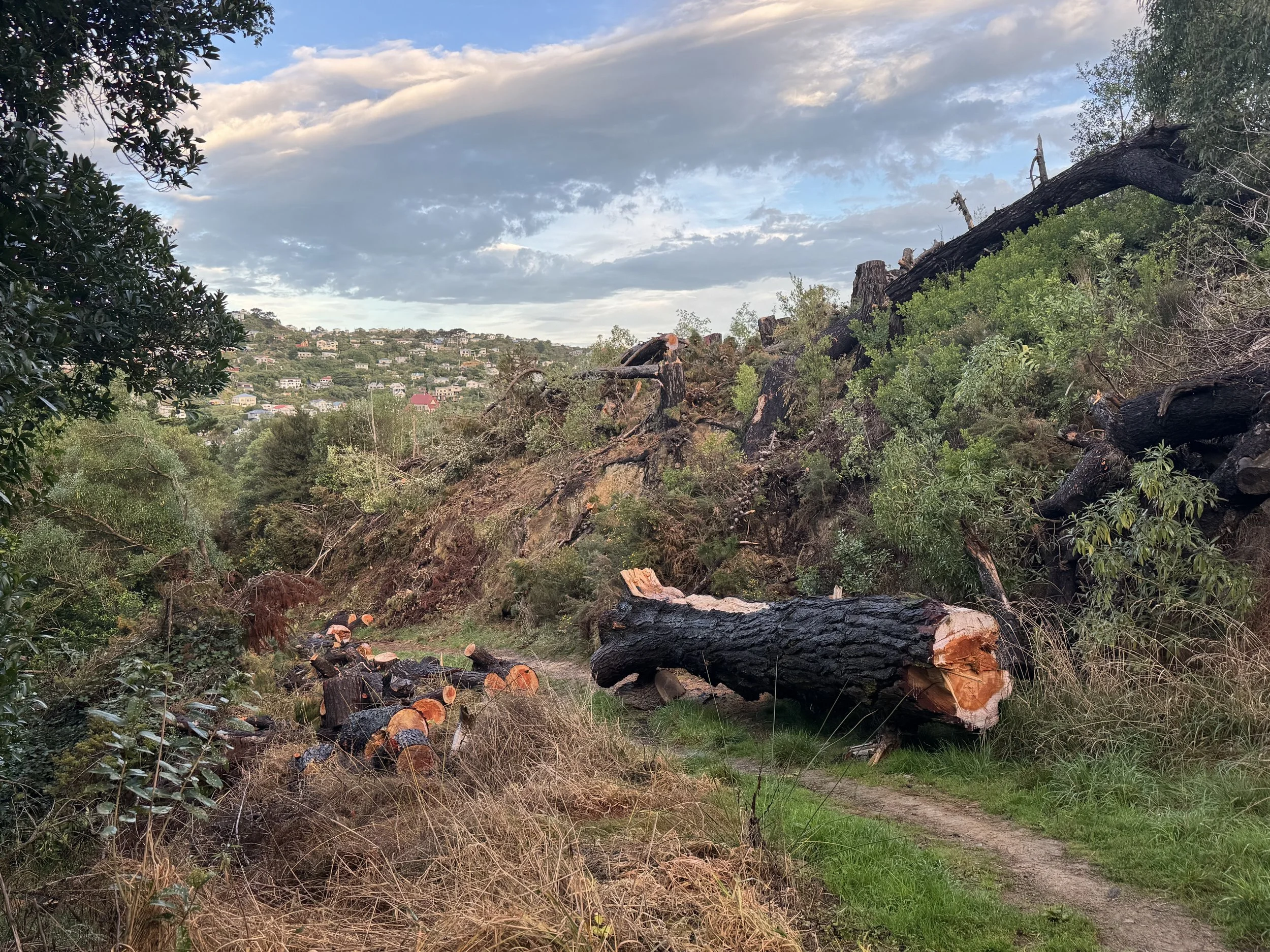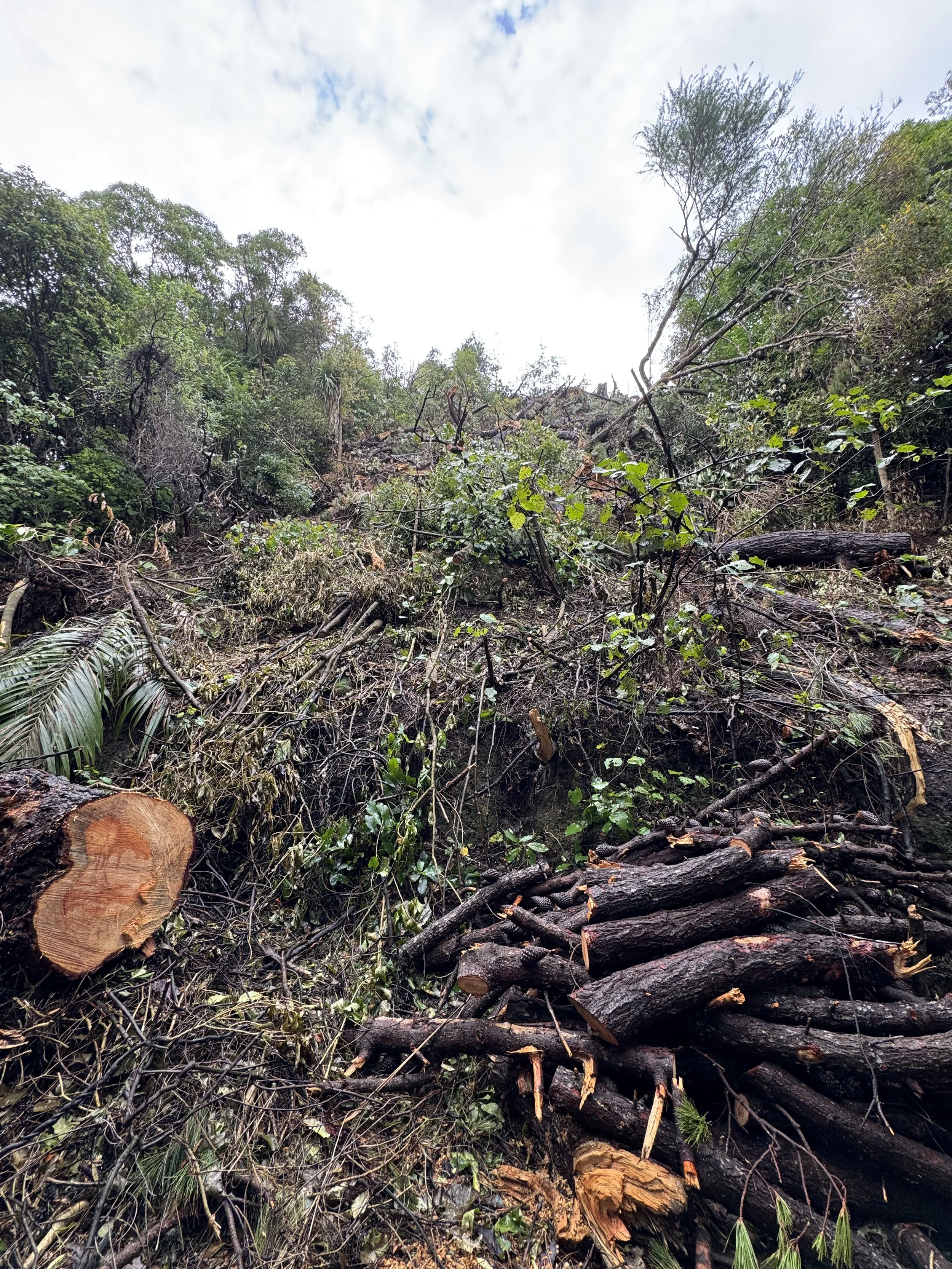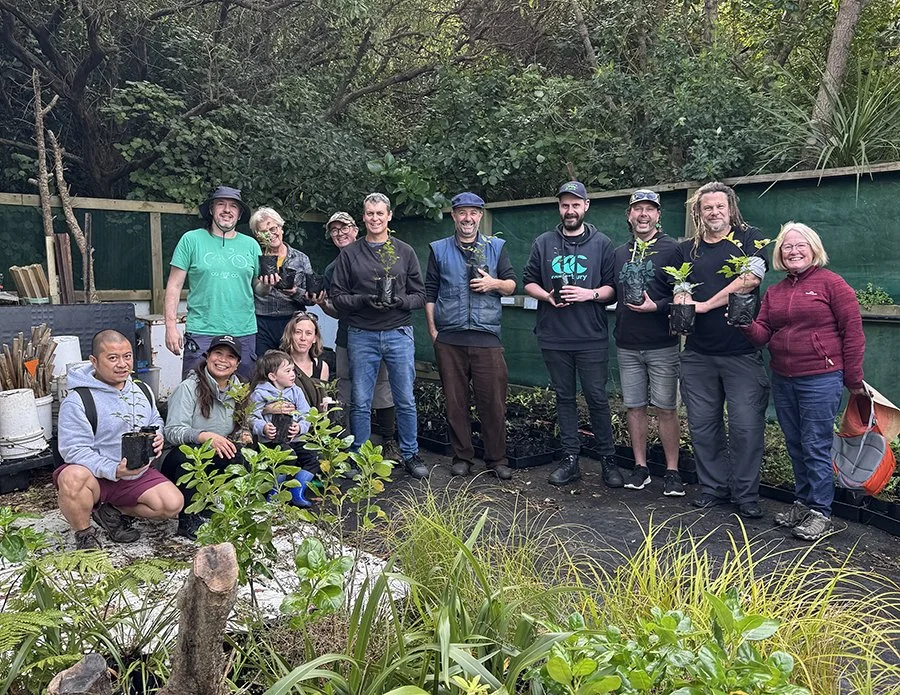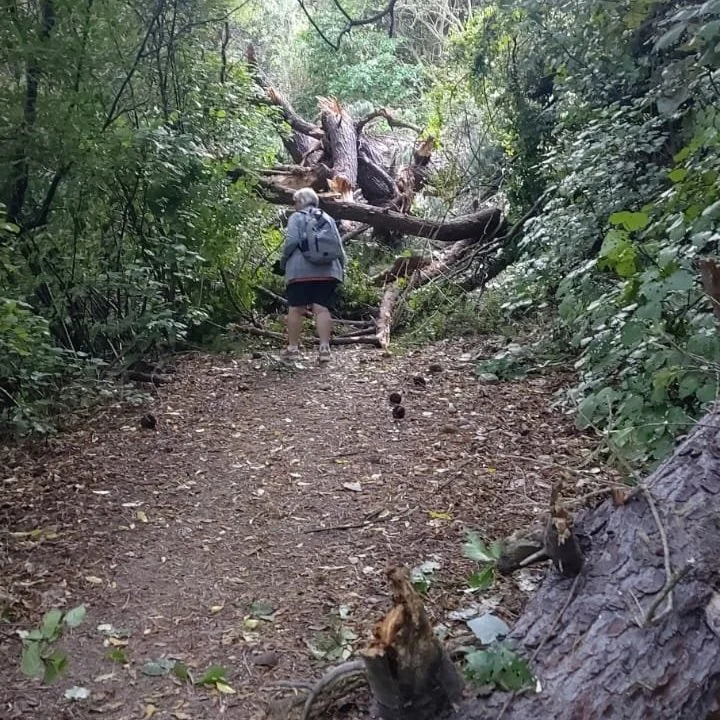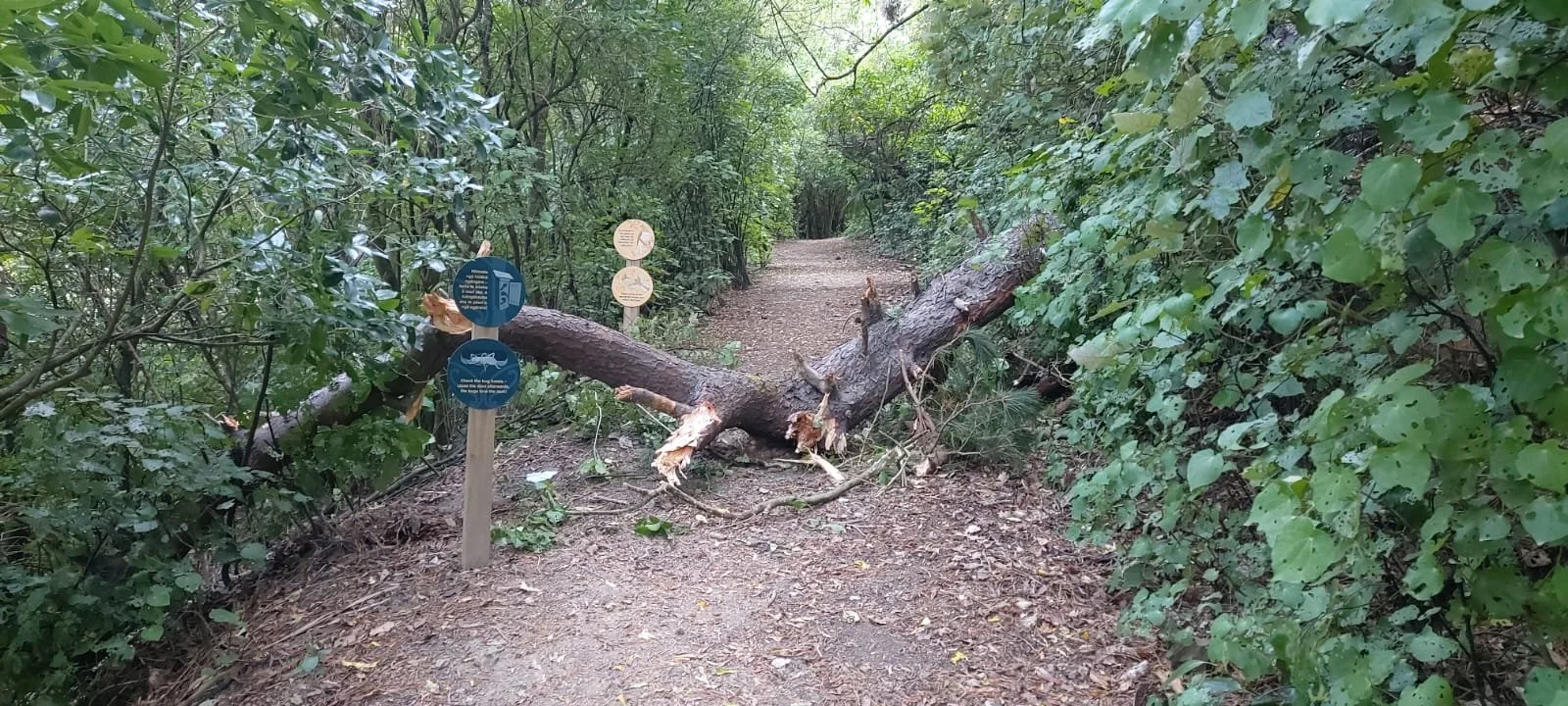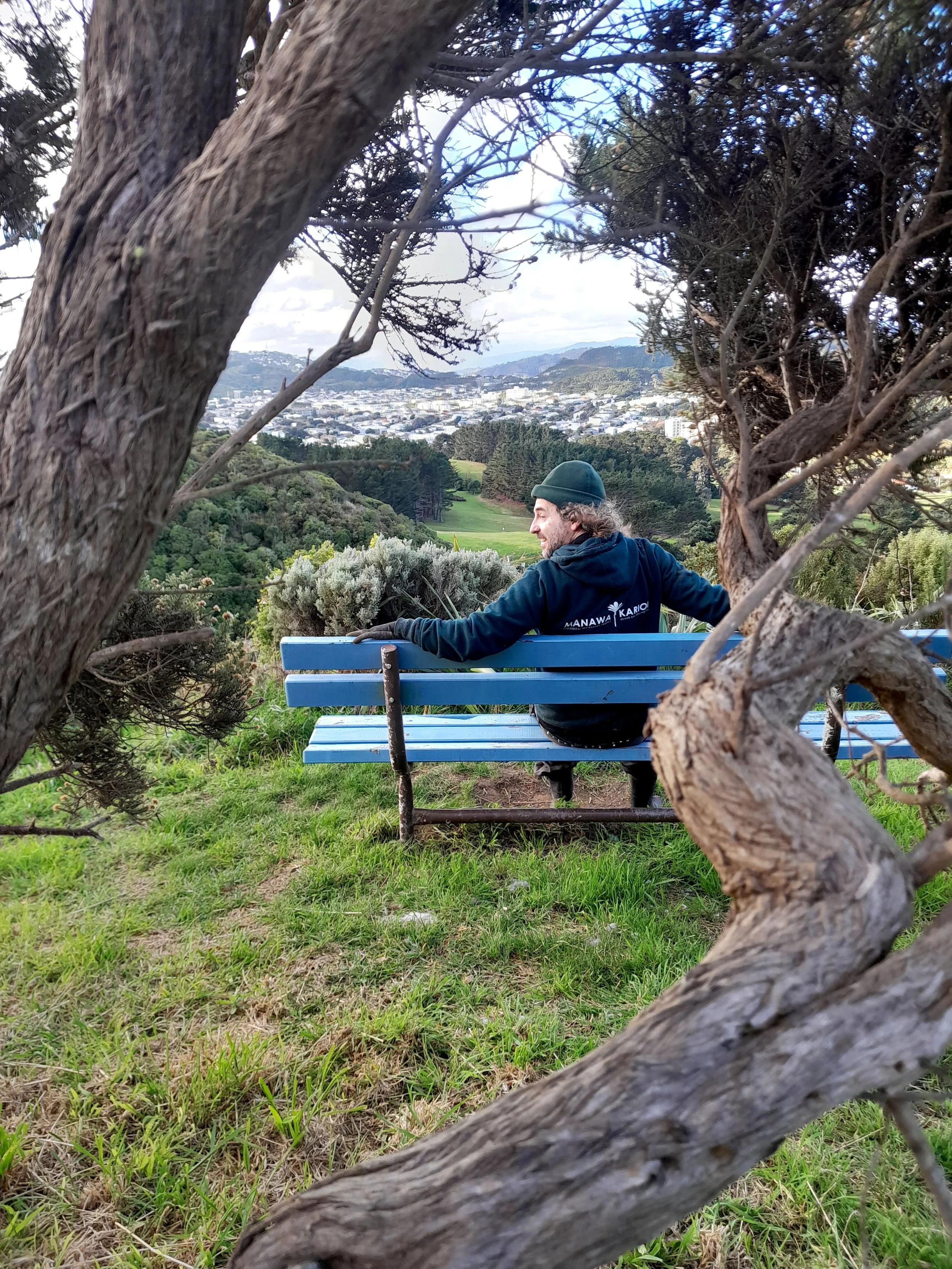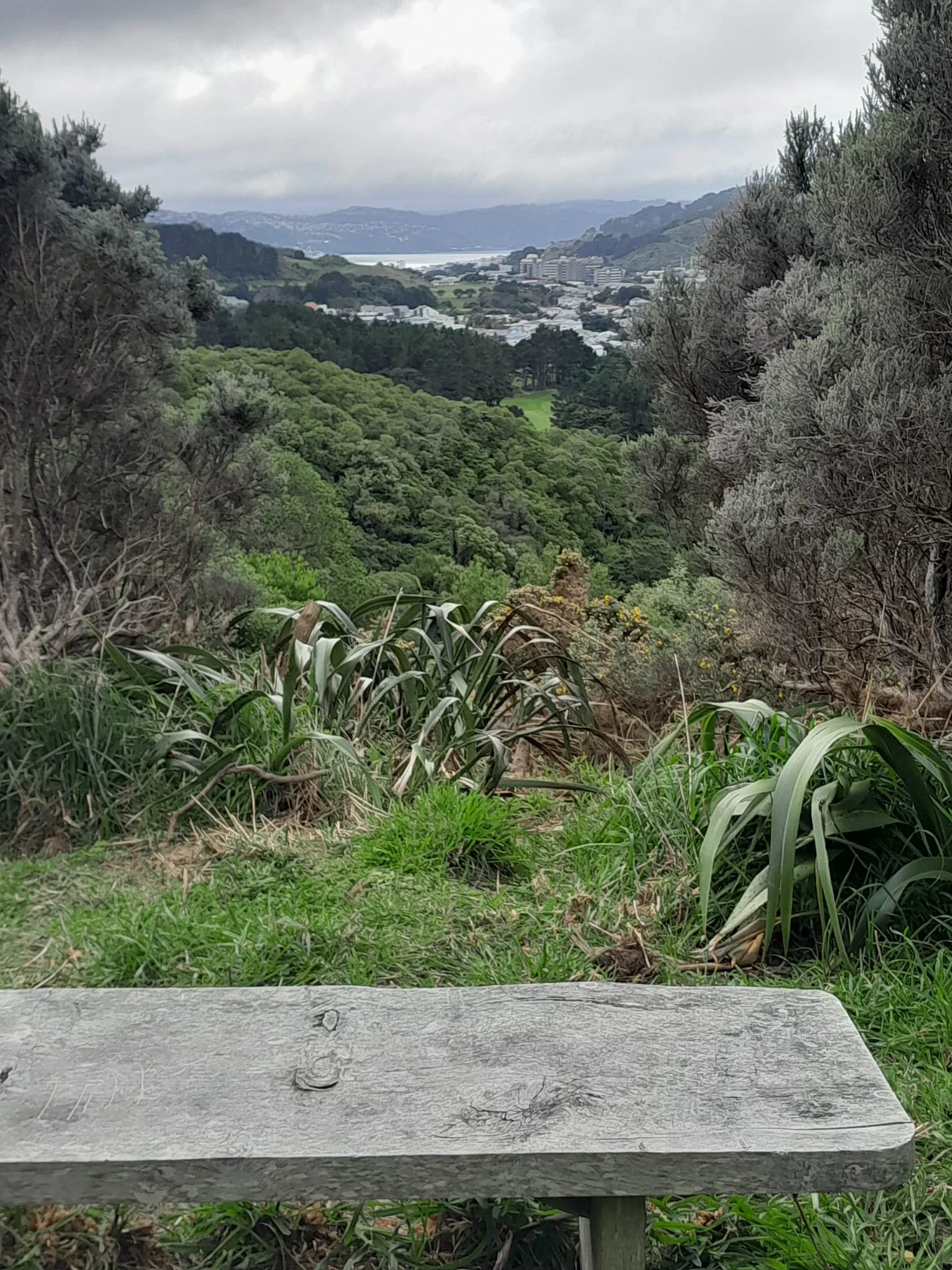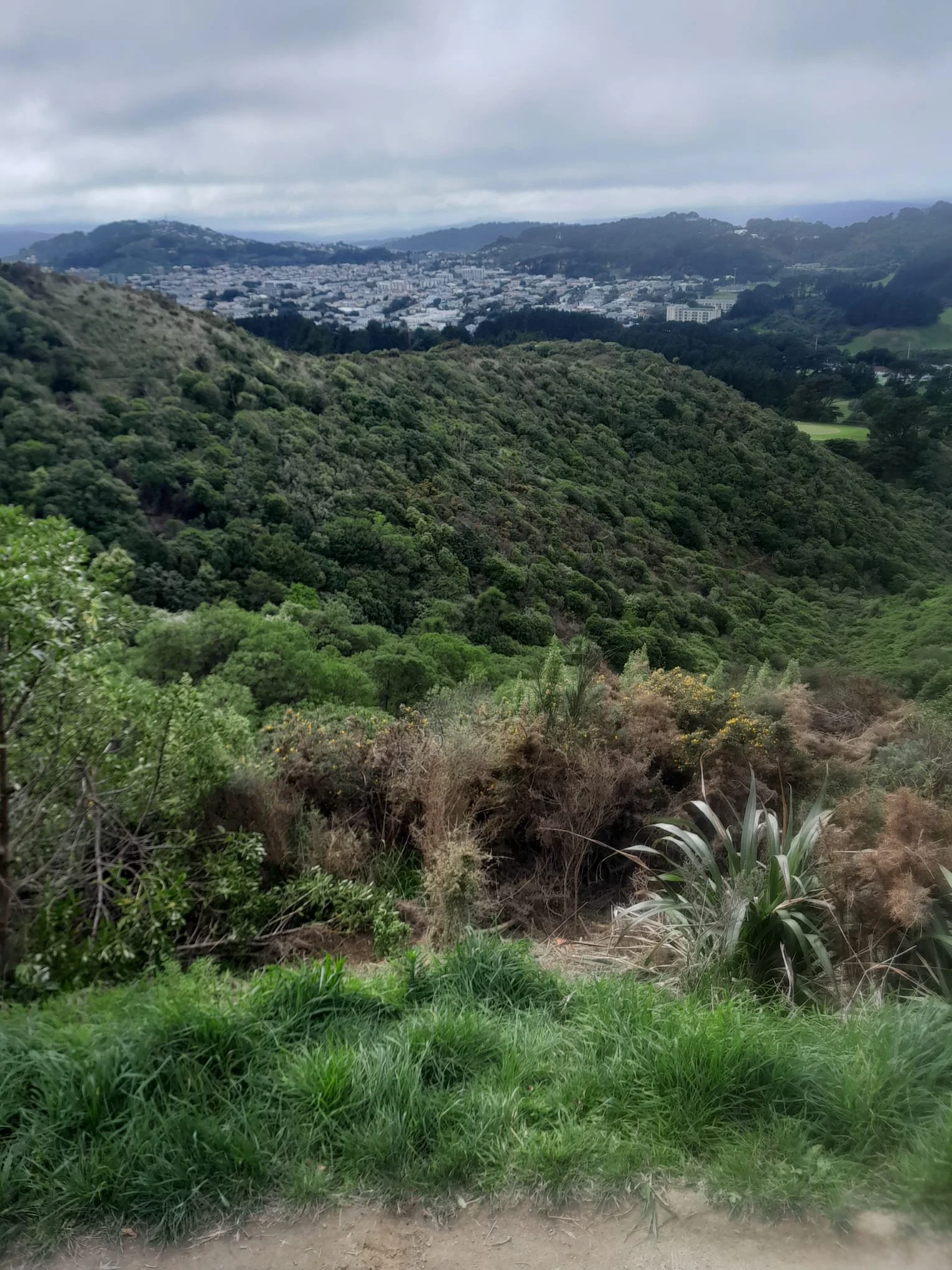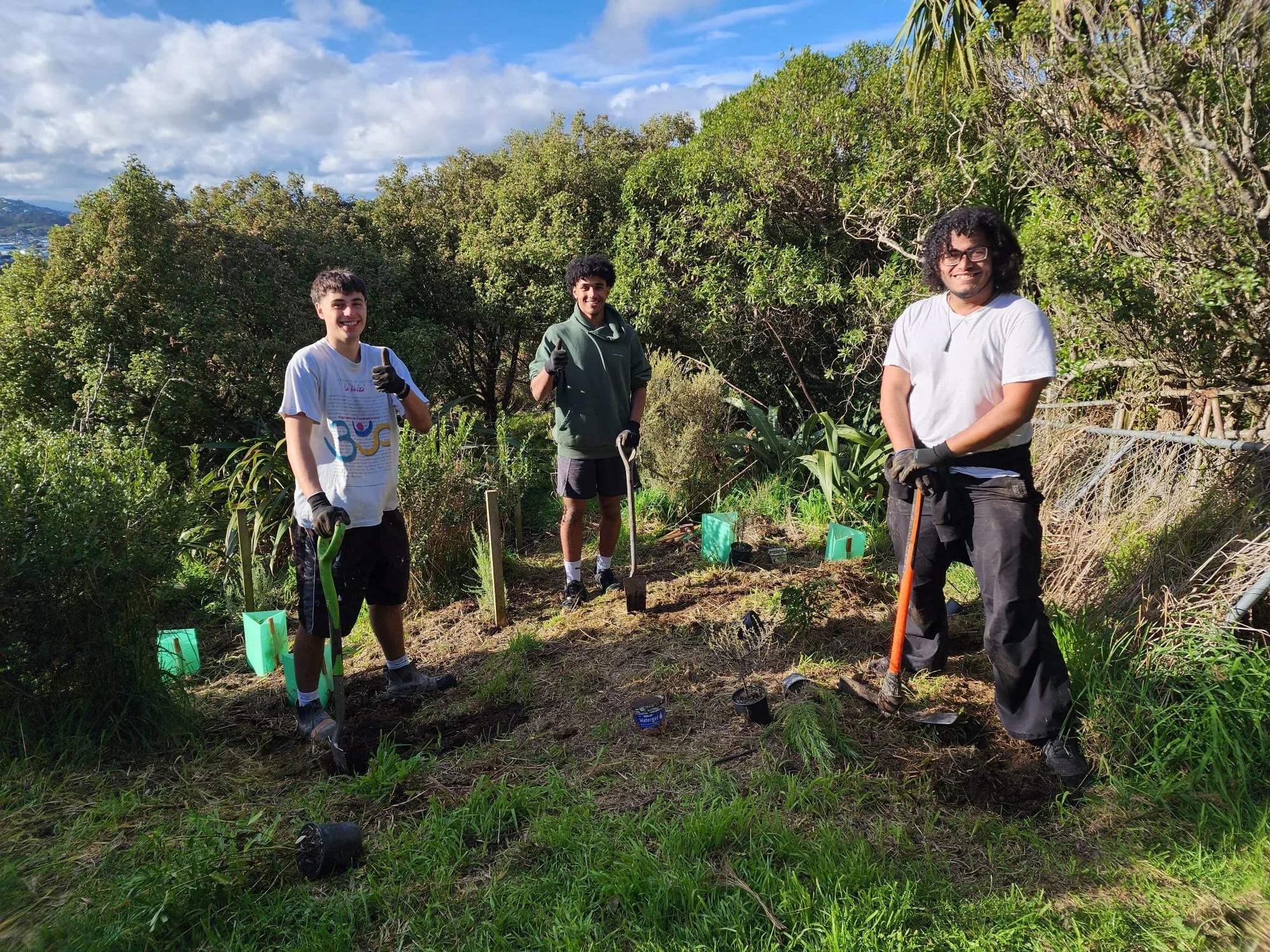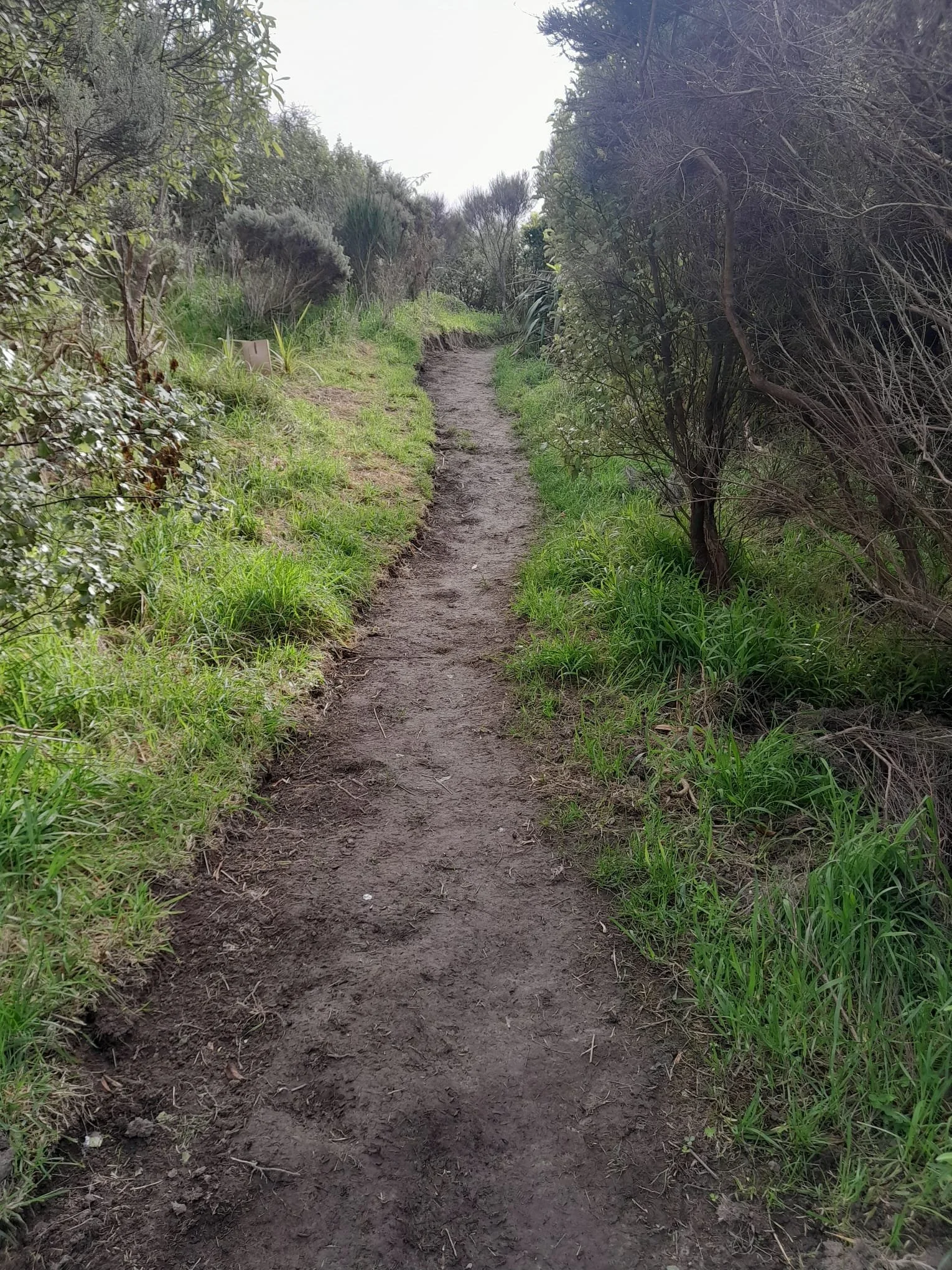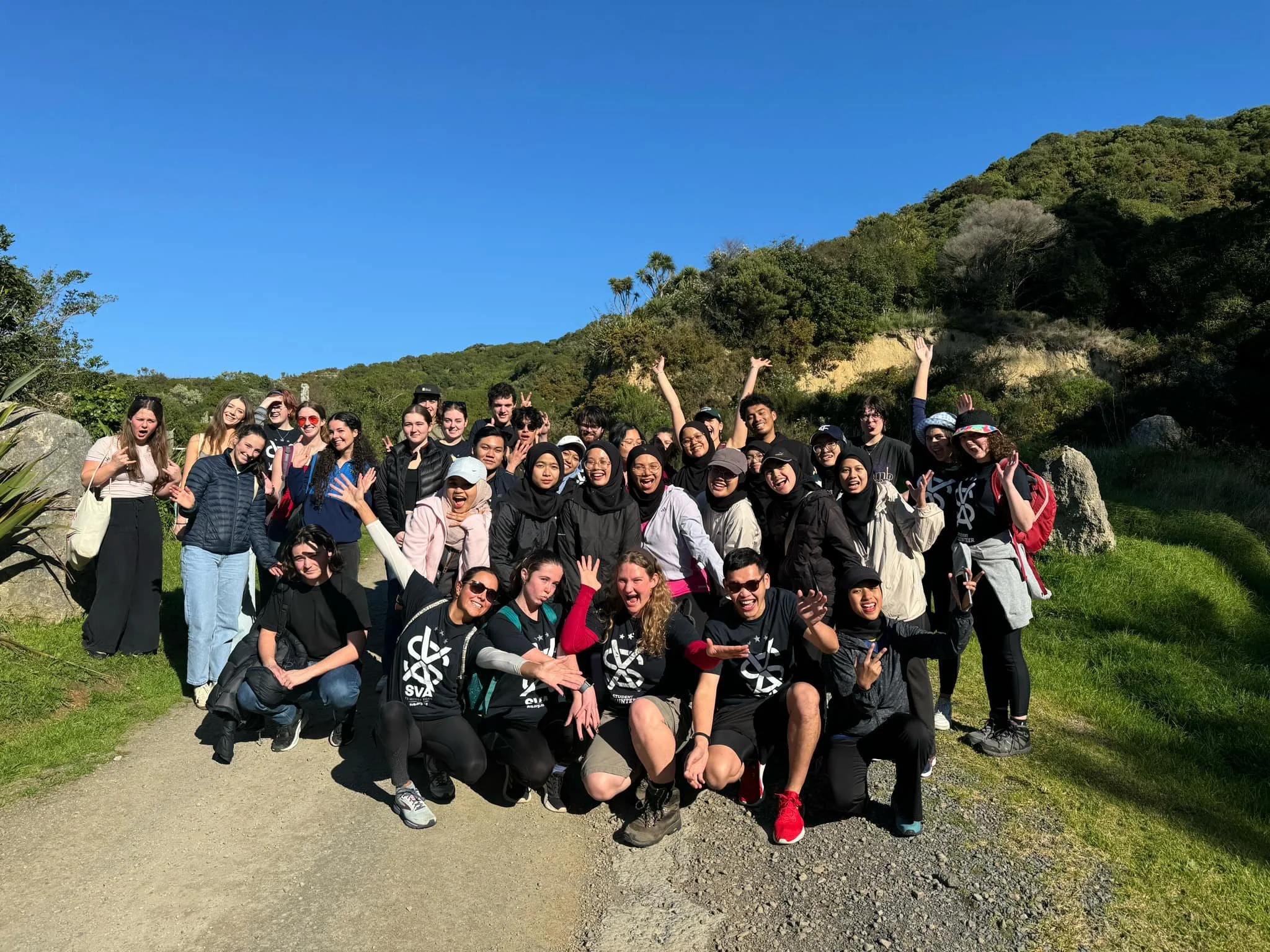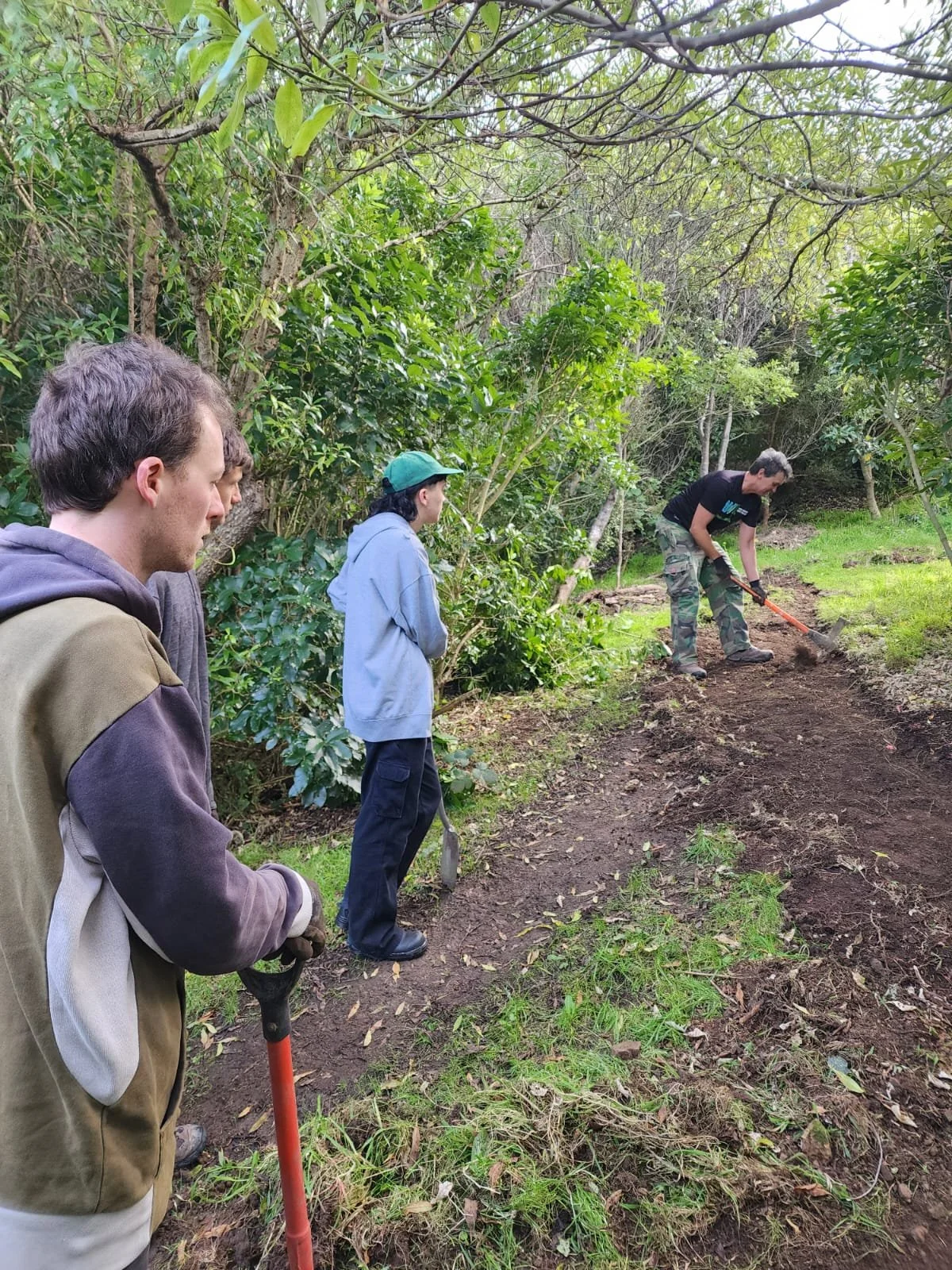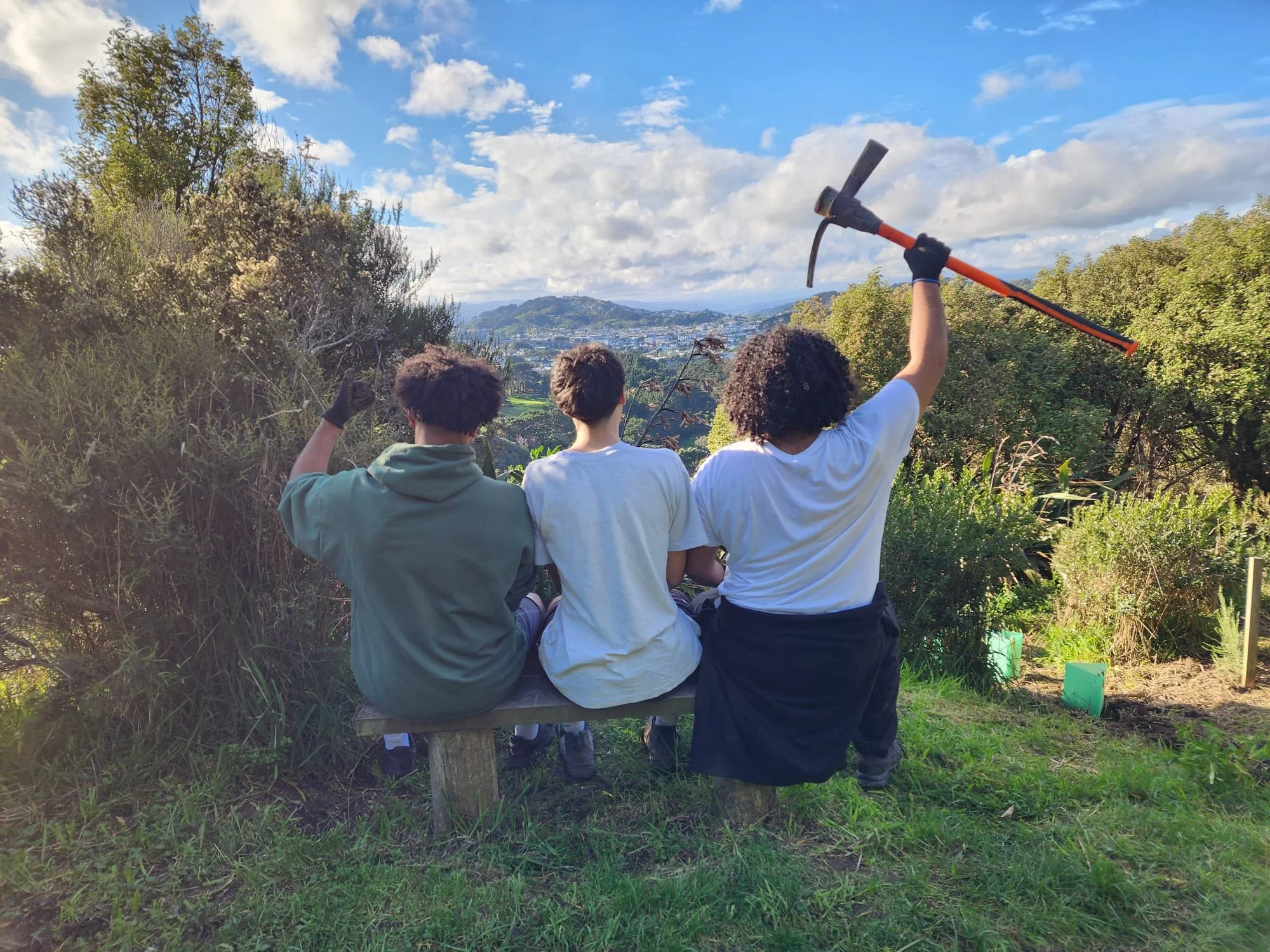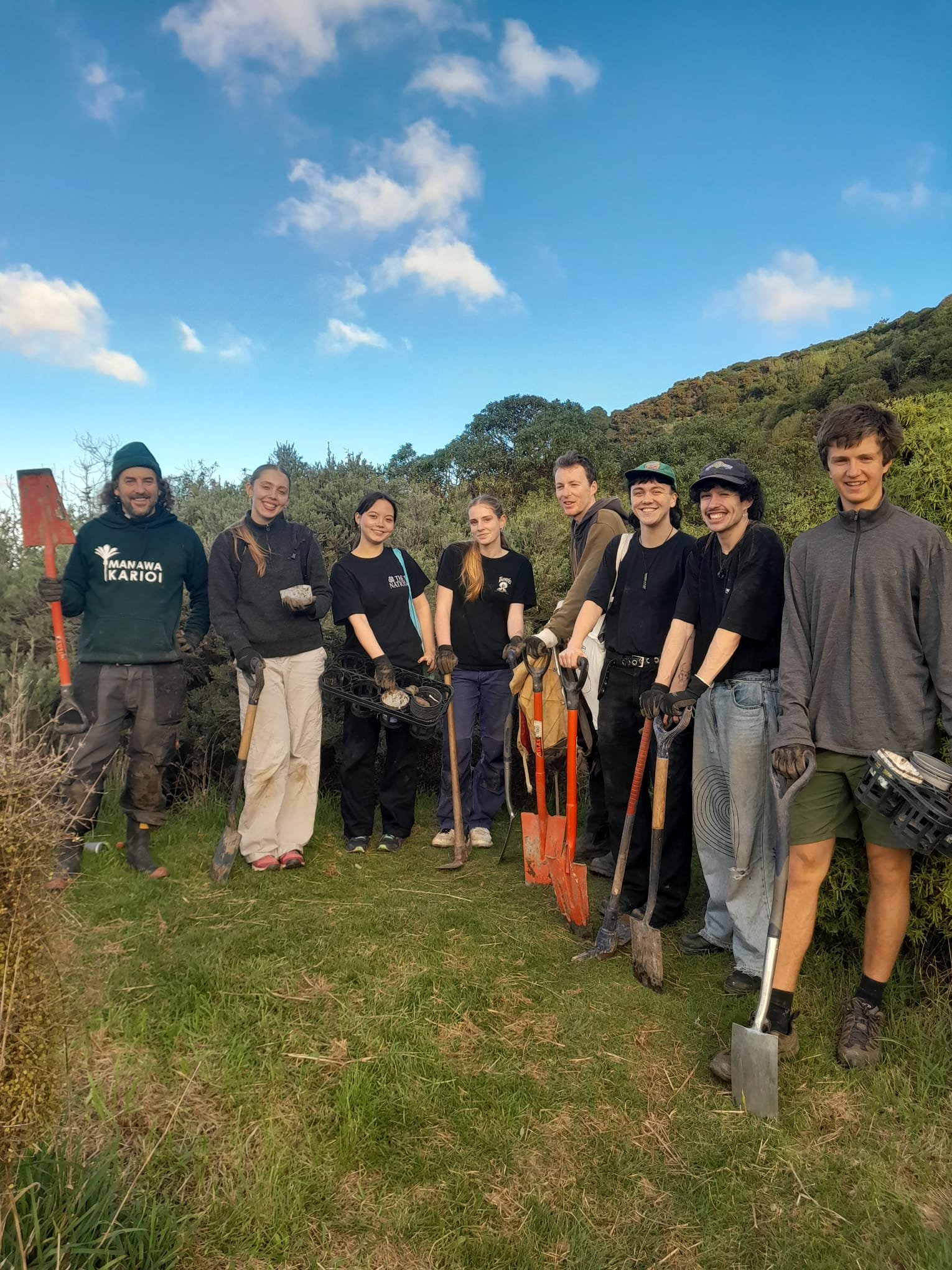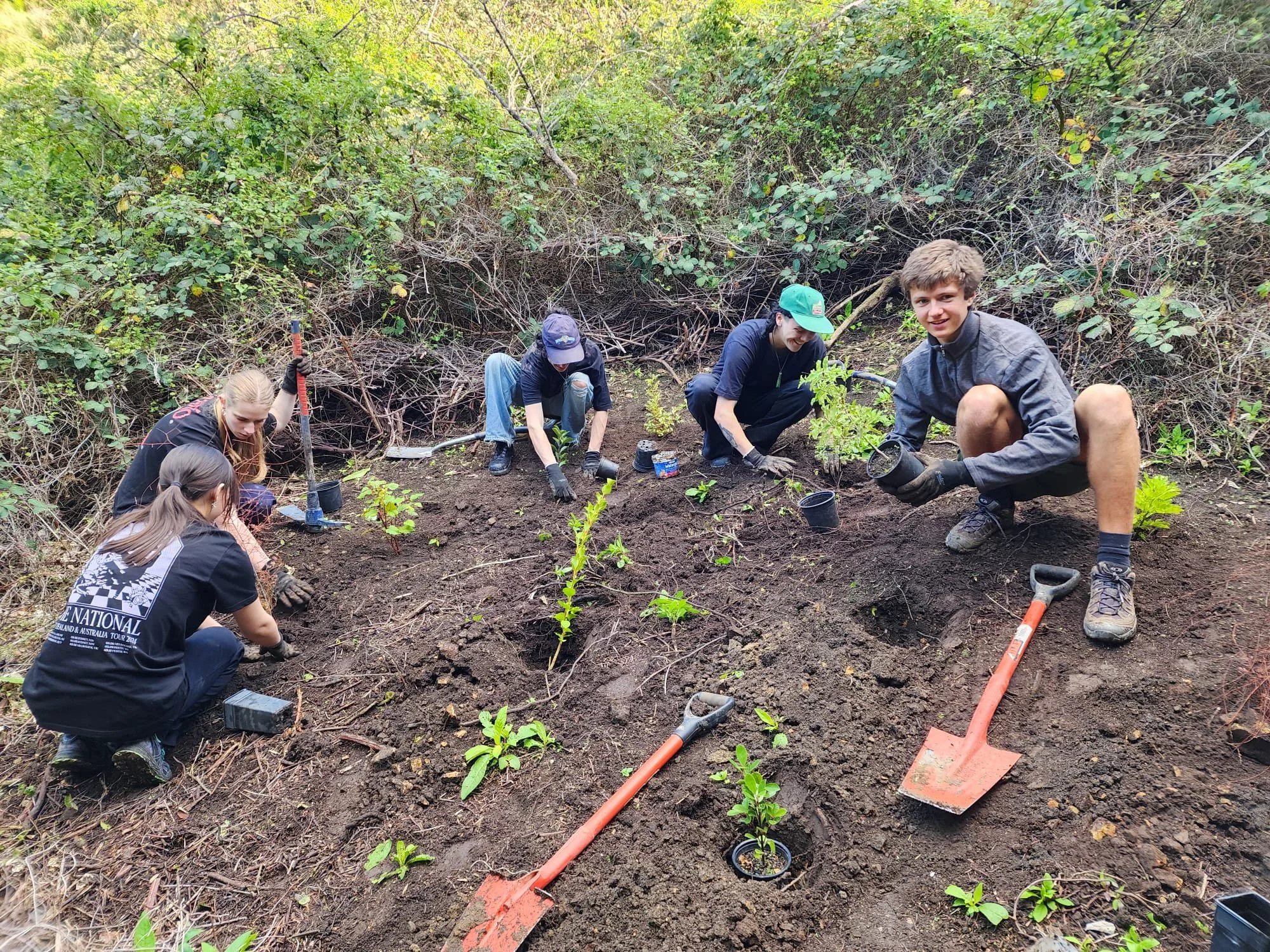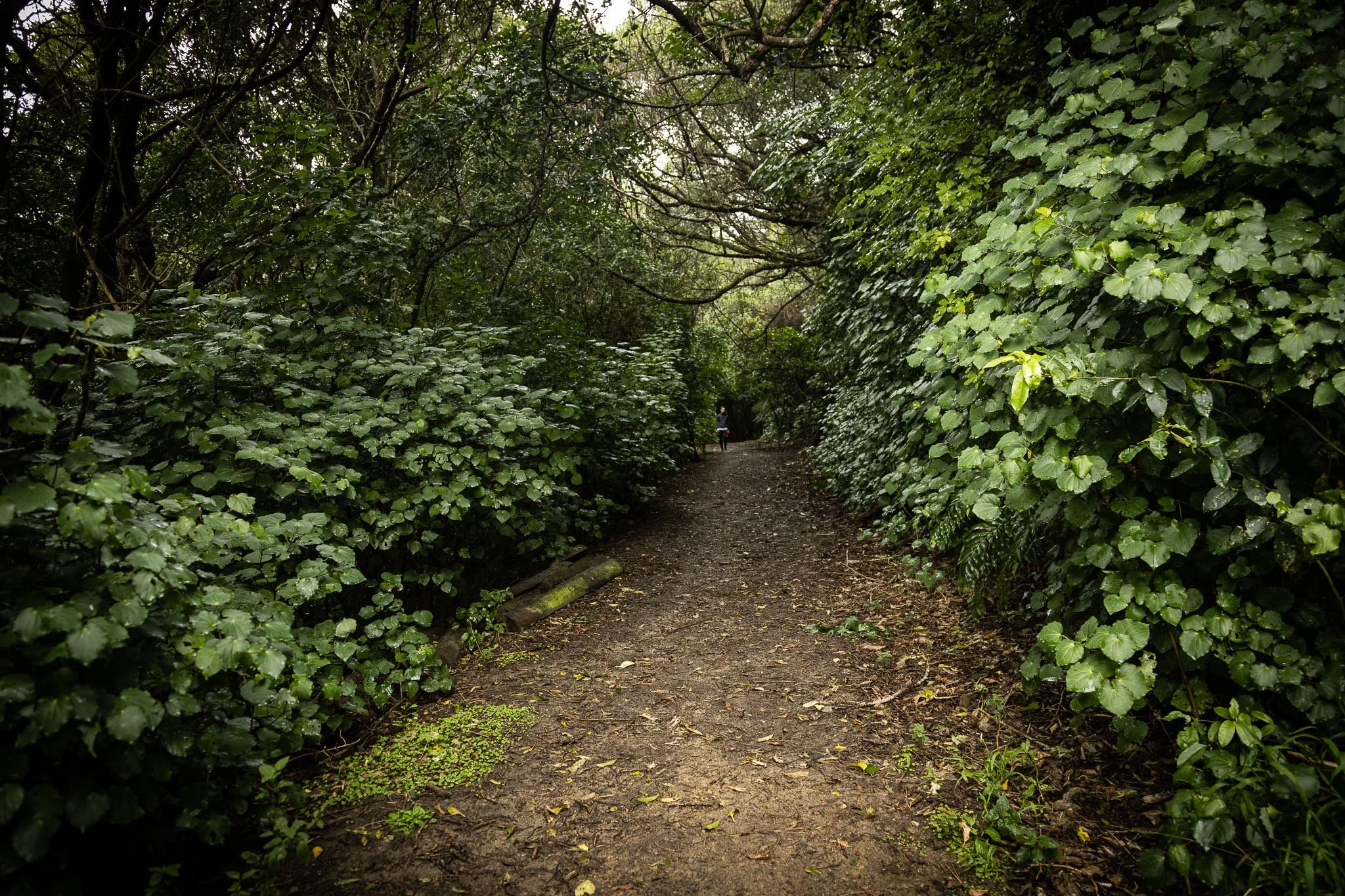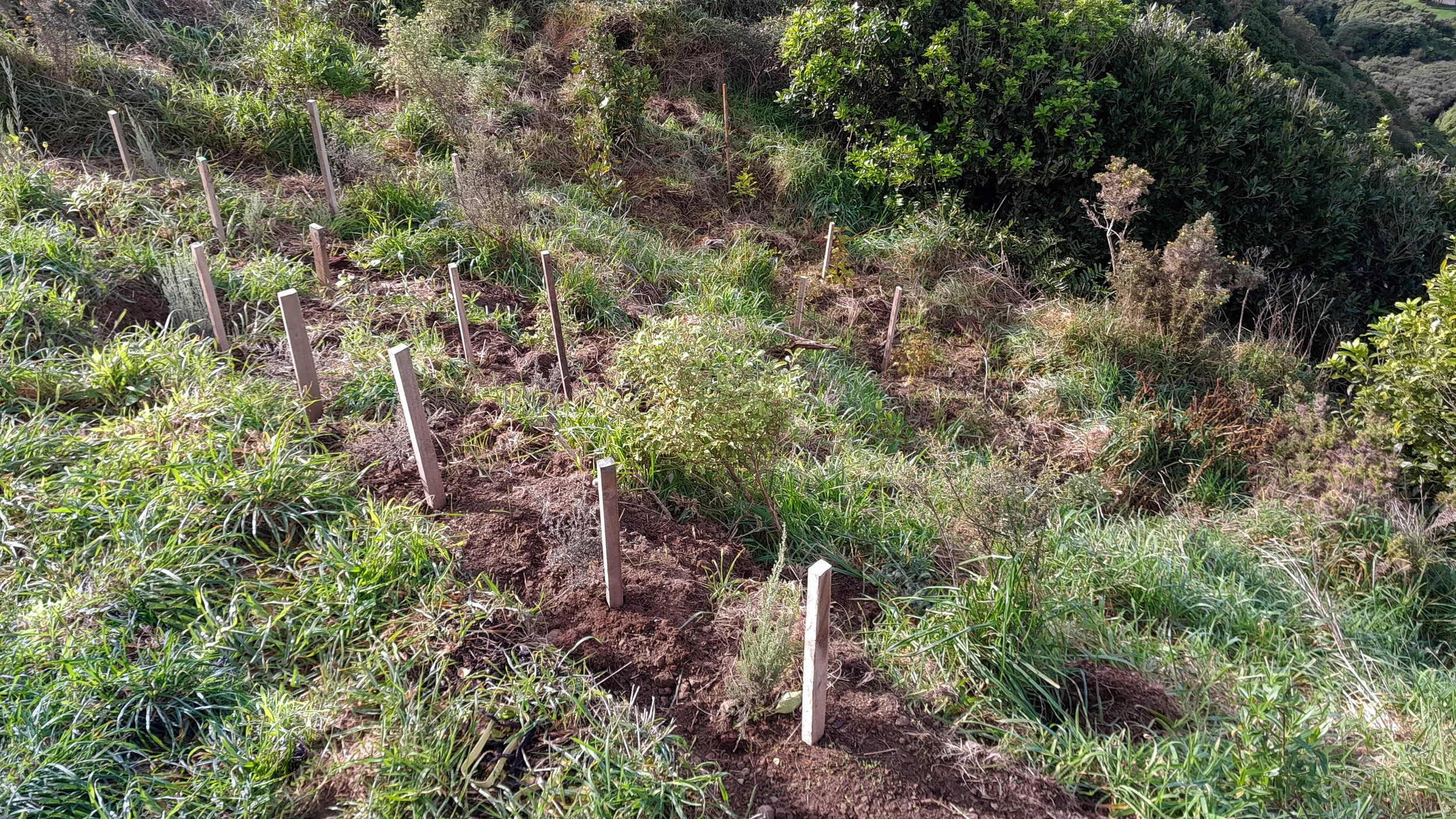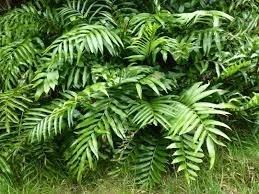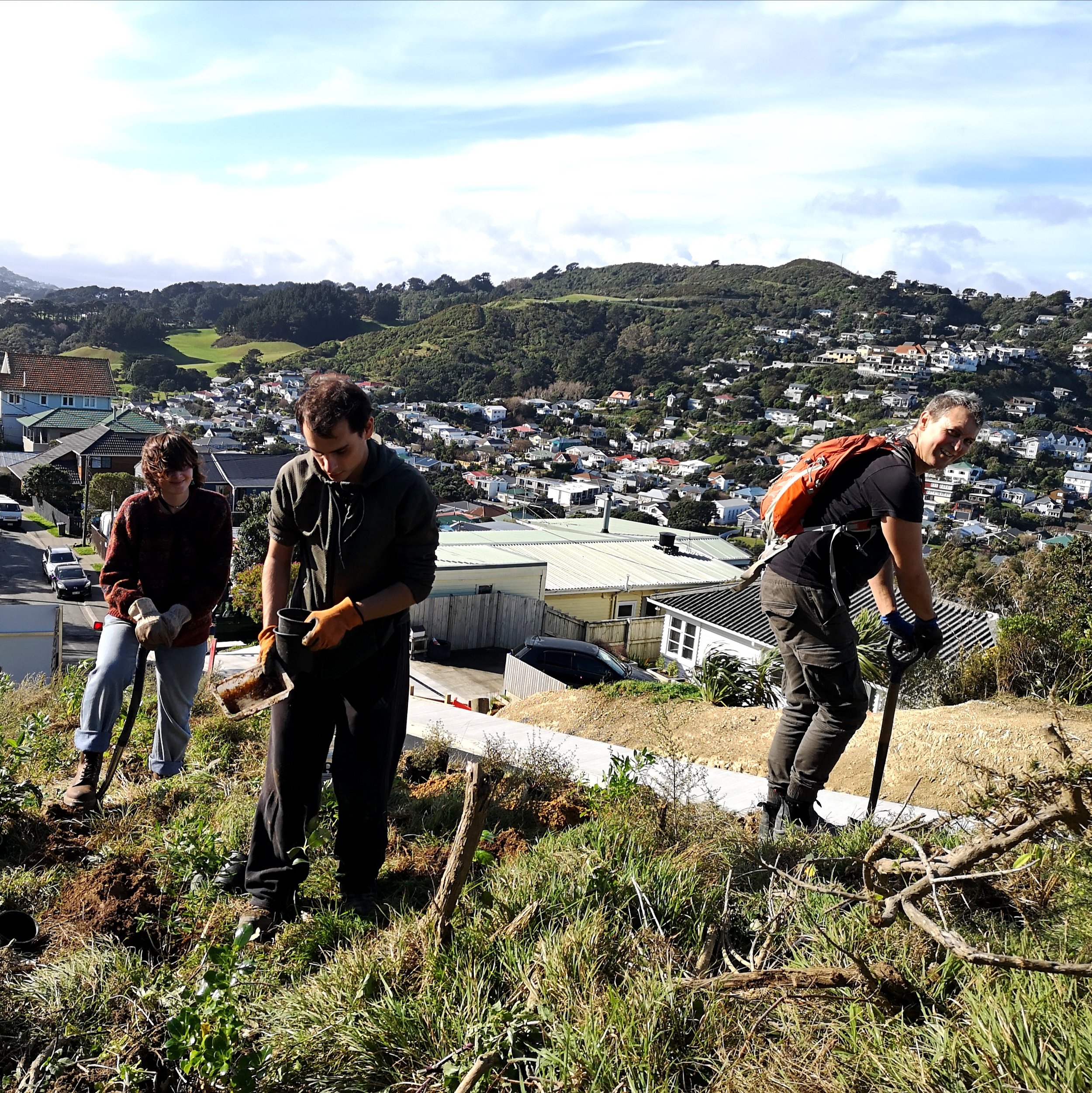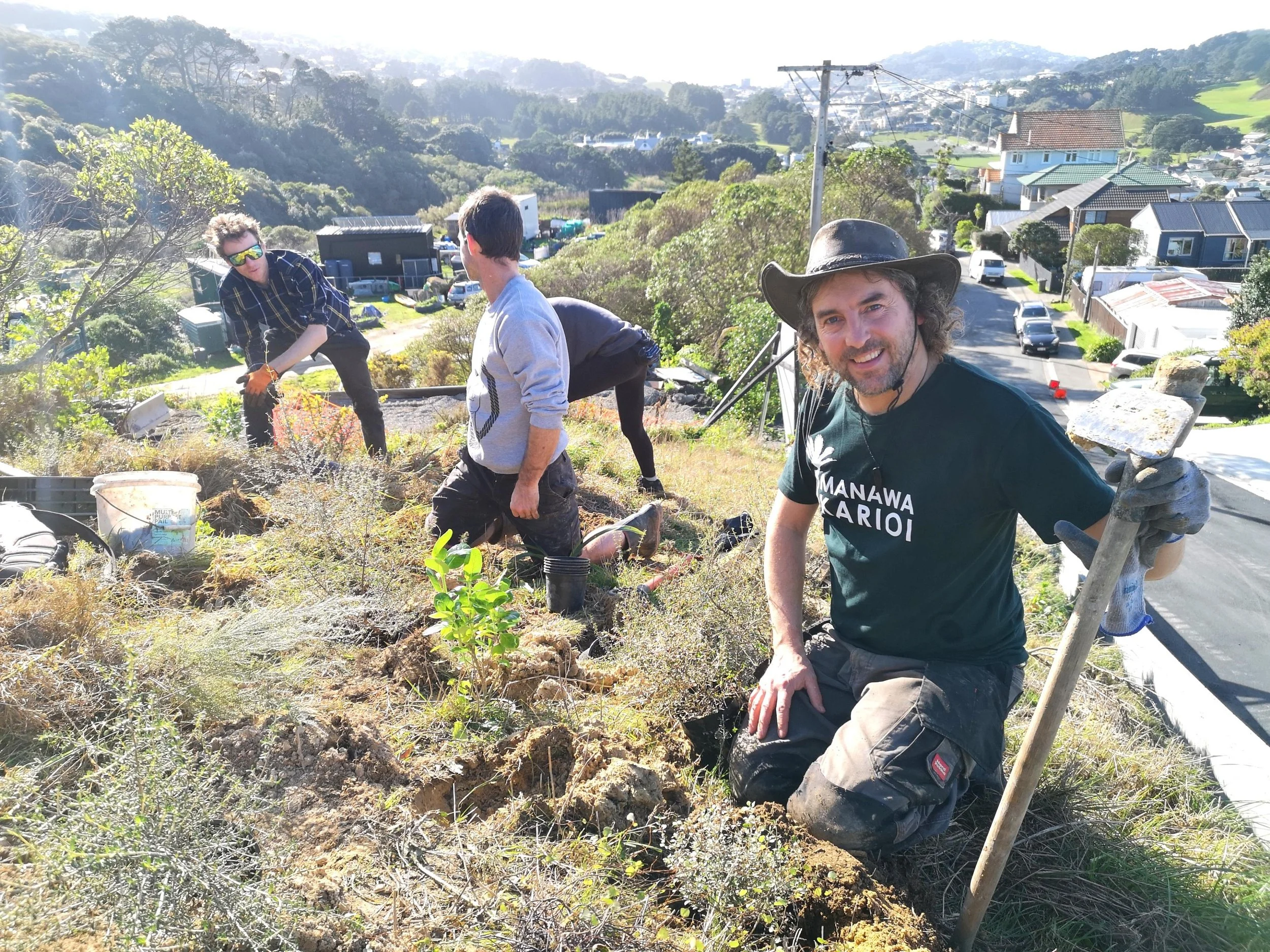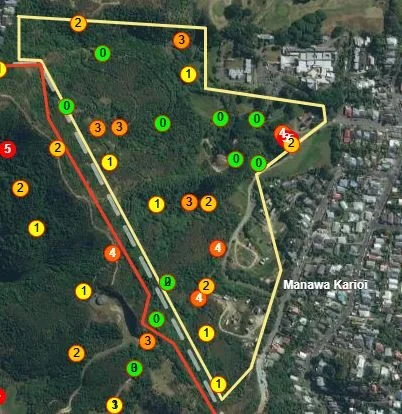The big storm that rolled into Wellington in early May caused minor damage at Manawa Karioi. One small ngaio was blown over and a few branches broken on other trees, and some trees have suffered from salt-burn.
Things could have been worse, but fortunately the stand of pine trees along the ridge above the marae carpark were removed a couple of months ago. The pines had been suffering storm damage for years, and were becoming hazardous.
In the process of being felled, a number of them fell onto the slope above the Nature Trail. This resulted in a number of native trees being damaged or even flattened in the process.
But every cloud has a silver lining. The felling of the pines means that the soil will no longer be acidified - you may have noticed that very little grows under pine trees. And pine trees also draw a lot of moisture from the soil, severely limiting what else can grow. With the pines gone, the 30 years of native tree seeds that have accumulated on the slope will begin to germinate, quickly filling in the gaps that have been created.
The gaps also give us the opportunity to fill the area with podocarps like kahikatea, matai and miro on the lower slope, which is shaded and holds soil moisture longer into the summer.
The upper slope will provide the opportunity to plant a large stand of titoki.
Other areas we will be focusing on this season include the mid section of Moemoea, the mid section of Te Uma i Mokotia and the upper length of Koiwi Tohora. These all will involve lots of titoki. We have about 140 titoki that were grown for us, most of which are ready to plant this year.
Potting up working bee of Manawa Karioi seedlings at SEA / Tawatawa Nursery.
Titoki (Alectron excelsus)
Titoki grows to about 10m high, and is quite common throughout Te Ika A Maui. It often forms the forest canopy on north-facing slopes, growing in association with rewarewa. Not many stands of titoki/rewarewa forest remain within Poneke, but there is an impressive remnant at the canopy walkway at Otari. We have planted over 100 rewarewa at Manawa Karioi, but until now we have had trouble obtaining titoki.
Titoki has small flowers, with male and female flowers being found on separate trees. Flowering occurs from spring to early summer, with the fruit capsule taking a year to mature. It then splits open to reveal one large shiny black seed that is covered with bright red, fleshy fruit. Trees can become loaded with fruit, which is targeted by birds like tui, who swallow the seed whole, thus dispersing it when they fly away.
Titoki - Alectryon excelsus (fruit, seeds) Photo by Tatiana Gerus, Татьяна Герус. Attribution: https://www.flickr.com/photos/tgerus/5032544657
Post written by Ross Gardiner

